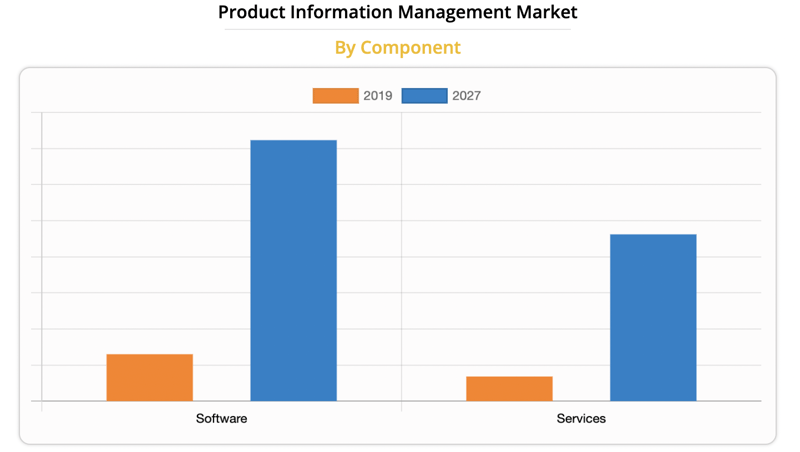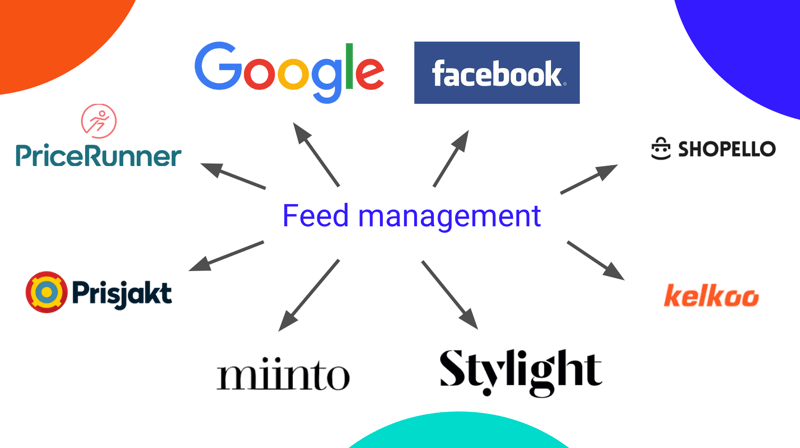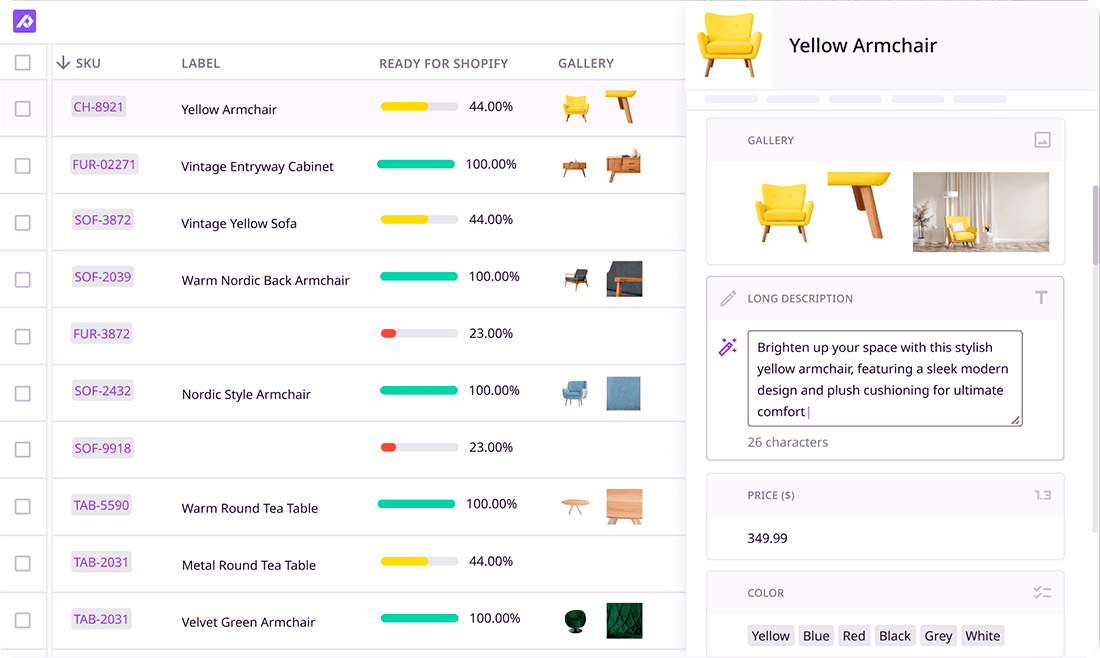
Keep the good stuff coming
Subscribe to our blog newsletter and get monthly content that helps you manage product data smarter.
No spam. Just real value.
Many people believe that PIM solutions and product feed management systems are the same things. That’s only because they deal with a lot of the same issues, namely product data.
But the two tools are actually quite different from one another and can work together in effective ways to create a more complete and effective solution. If you sell physical products in this day and age, you likely have a need for both a PIM and a feed management system. So, why not capitalize on your feed management system by pairing it with Plytix PIM.
Now, you might be asking yourself what the differences are between PIM solutions and feed management systems. If you’re unsure about that, you’re not alone. In this article, we’re going to explain how these two solutions differ from one another and how they work best together.
What is PIM?
PIM stands for Product Information Management. It details how you manage your data and the digital assets that go along with it, such as videos and images. It has become huge in both the B2B and B2C sectors, with the expected market size reaching $59.25 billion by 2027.
When you consider that in 2019 it was only worth $9.9 billion, that’s some explosive growth.

PIM is used to implement omnichannel and multichannel touch points from which to sell products. PIM tools centralize all of this product data, including how it’s handled and collected.
Your data comes from many different sources, and it’s PIMs job to combine all disparate information into one centralized source. It can then send that information out to whatever digital channels or datasheets you’re using to sell to the businesses that you sell to/through.
When looking for a PIM system, make sure that it’s able to:
- Manage complex product relationships and variation
- Create workflow automation
- Offer a high number of SKUs
- Allow for easy customization of the information you’re sending out to match the requirements of your channel or customers.
- Integrate with the tools you’re already using, like your CRM or ERP
- Make it easy to export product data to retailers and distributors in the right format
Using a PIM saves you valuable time because you won’t have to manually enter your data on every platform you’re selling on. This can be a long process if you’re going for a true multichannel experience. And make no mistake about it, that’s what customers want. If someone’s on Amazon, they don’t want to have to go to your website to check what the newest version of your product looks like before paying. They want to see it right on Amazon.
That’s why services like Plytix seek to create flexible digital asset management. If your newest photos are in the PIM, then they will automatically be updated wherever you sell. This not only makes it easier for your customers, but it’s a great tool for your team to collaborate in.
The data managed in a PIM includes:
-
Usage information—this is important information related to your products’ usage, like how-to guides and product descriptions
-
Technical data—information about how your products are made, such as the physical descriptions like the color, size, weight, and various materials
- Emotional data—the information that touches our emotions and creates credibility. This could be social proof like reviews, descriptions, stories, and affiliate images
Without a PIM, you’d have to rely on spreadsheets or other information systems to keep track of all your product data. That means manually entering all of the data we just discussed and coming up with an organizational system that doesn’t make you want to pull your hair out.
Not to mention, data entry mistakes are more than likely. If they’re not caught, your customers will lose faith. That’s why PIM adopters have seen a 23% decrease in product returns.
What is a feed management system?
A feed management system manages the various feeds associated with your products.
But what is a product feed? It’s a digital file that you can use to list information on your products that can then be used on ecommerce platforms, marketplaces, or advertising channels. These feeds are typically listed in a specific format such as text files, XML, and CSV.
When you’re selling products on different sales channels, you can extract your data from a product feed. They come in handy for online marketing, and many businesses use them to list information on social media, blogs, emails, comparison websites, and affiliate networks.

The product feed contains a wealth of data, including:
- The name of the product
- A description
- The price
- The proper category or department it belongs in
- Information on availability
- Stock information
- Key features of the product
- Promotional prices
Some of this should sound familiar because it’s a lot of the same information managed by a PIM. However, some key differences between the two need to be pointed out.
The main difference lies in the handling and distribution of data—a PIM system does more of the “pre-send” data handling, while the specialty of an FMS is sharing the data in your feeds to a wide variety of channels through a robust set of integrations. While PIM will typically support some channels, you may get better results from an integrated approach of both PIM and FM.
Plytix allows you to enrich, optimize, and curate your product data, while the feed management system fetches the information from the feed and moves it to the appropriate channels.
How can feed management systems and PIM work together?
Now that you understand why PIM solutions and feed management systems are different, you can probably start to see how they fit together to create a well-oiled product data machine.
Your PIM is a central repository of information that takes in data and sends it out to wherever it’s needed. A FM system allows you to create feeds that can be exported to third-party platforms for both ecommerce and marketing. These two disparate services can come together to create efficiency and help you save time and energy that can be devoted elsewhere.

Vikas Kalwani
Vikas Kalwani is a product-led growth marketer and B2B Marketing Specialist skilled in SEO, Content Marketing, and Social Media Marketing. He manages partnerships at uSERP and is a mentor at 500 Global.

What if your product data actually worked for you?
We’ll show you how Plytix helps you stop fixing data—and start using it.
Related posts
Keep the good stuff coming
Subscribe to our blog newsletter and get monthly content that helps you manage product data smarter.
No spam. Just real value.




Think others should see this?
Go ahead and share it.